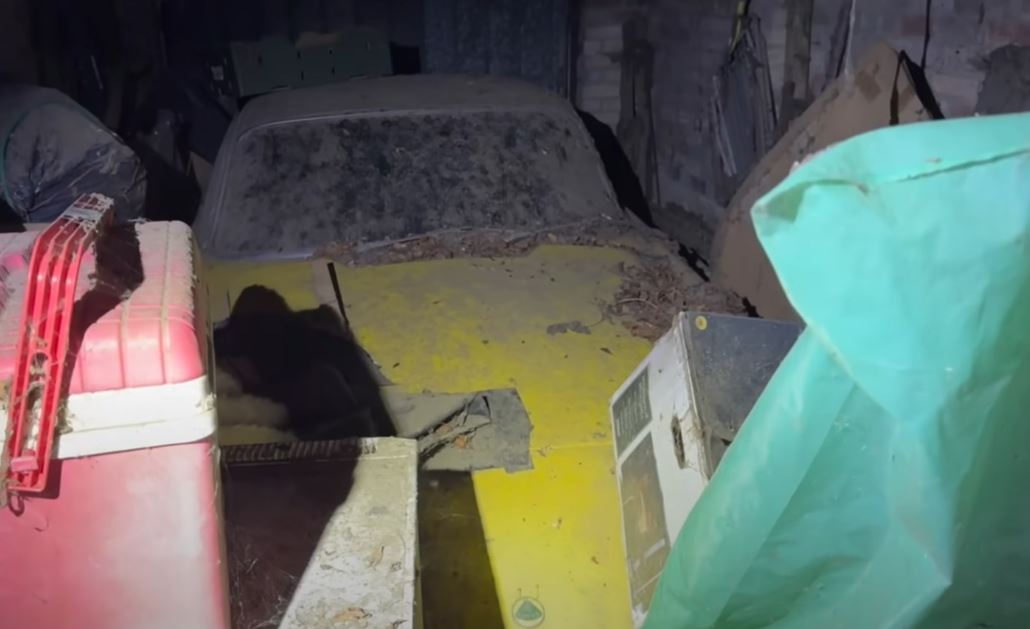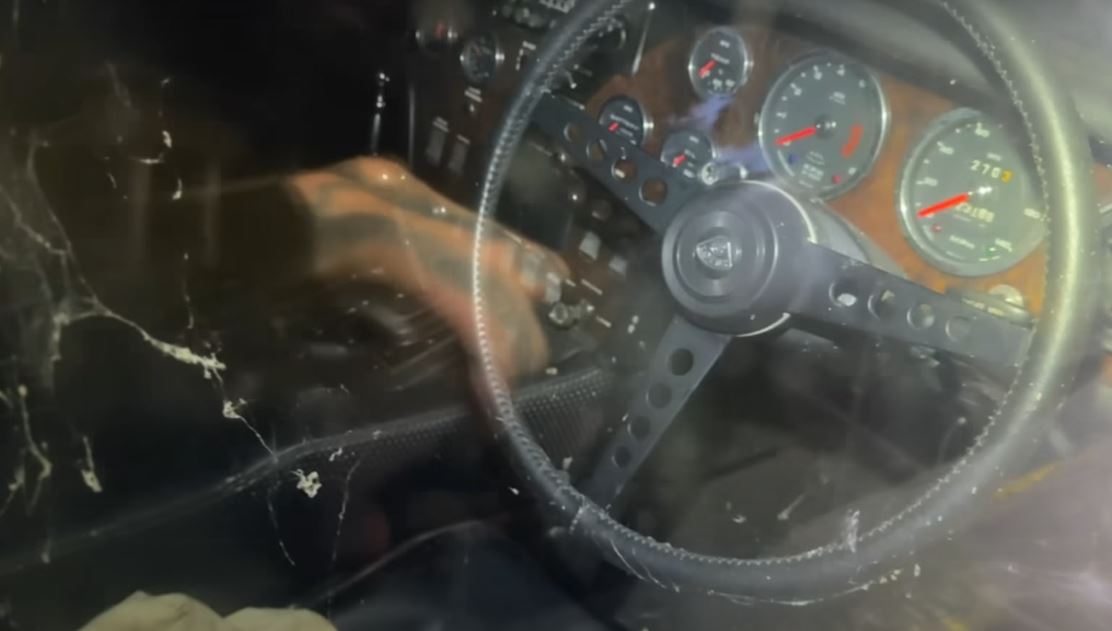We cover a lot of barn finds on these pages. That’s because we love classic cars, and we’re happy whenever they get rescued, regardless of their condition. But while some vehicles get lucky and emerge back into the light after decades, some seem cursed to spend their entire lives in hiding.
Rigs parked for decades usually re-emerge when the owner wants to sell or when he has passed away, and the family wants to settle the estate. However, many classic cars remain locked away on abandoned properties, and their prospects of being saved are bleak. The sports car you’re about to see below is one of those vehicles.
Today’s footage comes from YouTube’s “The Bearded Explorer,” which usually documents derelict houses and yards in the United Kingdom. This property’s exact location is a mystery, but it has been left behind for more than three decades. Or at least that’s what the cars parked in the front yard suggest.
Our host is greeted by a mossy Ford Fiesta, a rather common rig in Britain. He also found a Rover 400 Series from the 1990s. But the first big surprise is parked in front of the Rover. It’s a Peugeot 205 GTi, one of the most iconic hot-hatchbacks of the 1980s and early 1990s.
Introduced in 1984 to compete with the Golf GTi, the 205 GTi featured a 1.6-liter four-cylinder engine rated at 104 horsepower. In 1987, Peugeot updated the engine to produce 115 horsepower. A 1.9-liter powerplant good for 120 horses was also offered. The 205 GTi soldiered on through 1994. Although it’s far from rare at more than 300,000 units built, a 205 GTi wasting away like that is a sad sight.
At the five-minute mark, an even rarer (and more exotic vehicle) appears. It’s a Lotus Elan, one of Britain’s most iconic sports cars. Unlike the 205 GTi, this vehicle has been parked inside and kept somewhat safe from the elements, but it’s buried in junk. To the point we can only see the front hood and the roof. Nearly every surface is covered in a thick layer of dust, but the car appears to be sound otherwise.
The Lotus Elan was launched in 1962 as the company’s first road car to use a steel backbone chassis and a fiberglass body. Tipping the scales at only 1,500 pounds (680 kg) and featuring four-wheel disc brakes, rack and pinion steering, and independent suspension, the Elan was one of the most technologically advanced sports cars of its era. It was also the firm’s first commercially successful vehicle.
The original Elan remained in production for a whopping 13 years and spawned several iterations. Power came from 1.5- and 1.6-liter four-cylinder engines rated at 90 to 126 horsepower. The most potent iteration needed only 6.6 seconds to charge from 0 to 60 mph (97 kph).
It’s impossible to guess the model year of this yellow Elan, but I can tell you it’s a +2 model. The hint is in the elongated roof, which combined with the longer wheelbase and wider track to give the Elan a 2+2 seating layout. The small rear seats were only suitable for children. The Elan +2 arrived in 1967 and remained in production until 1975, two years more than the regular version. The +2 shared underpinnings with the standard Elan.
How rare is this Lotus? Well, the company didn’t keep accurate records, but experts agree that Lotus produced 12,224 regular Elans and about 3,300 +2 versions. Some data on the engine, transmission, and model year would probably narrow that number dramatically, but the car is buried too deep to get that kind of info.
This sports car is simply too rare and cool to sit like that in a dirty barn, but it seems it won’t be going anywhere anytime soon. Hopefully, it will be rescued before it’s too late. This Elan deserves to be returned to the road.


